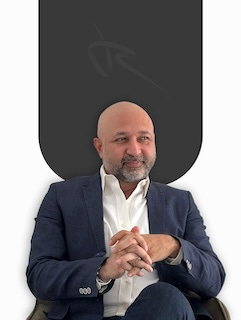Understanding the Zachman Framework: A Practical Overview for Enterprise Architects
How a structured taxonomy of models can bring clarity to enterprise architecture
The Zachman Framework is one of the earliest and most recognisable models in enterprise architecture. Introduced in the early 1990s by John Zachman at IBM, it remains a useful tool for understanding the structure of large-scale systems, especially in complex environments.
While newer frameworks like TOGAF have gained more traction, Zachman’s strength lies in its clarity—it helps break down an enterprise into structured components using a grid of perspectives and categories. This simplicity makes it a good starting point for organisations trying to gain clarity about what they have, how it works, and who is responsible.
As enterprise architects, our role isn’t just to design future solutions—it’s to understand the full context of what already exists. The Zachman Framework supports that task by offering a structured way to document and assess current-state architecture, helping us make better-informed decisions when shaping strategic initiatives.
What is the Zachman Framework?
A Two-Dimensional Taxonomy
The Zachman Framework structures enterprise architecture through a matrix format that makes it easier to organise and communicate architectural information.
The rows represent stakeholder viewpoints, from executive leadership through to implementation teams.
The columns reflect core interrogatives:
• What (data)
• How (function)
• Where (network/distribution)
• Who (people and roles)
• When (timing and scheduling)
• Why (motivation and strategy)
This approach provides a consistent way to look at an organisation from different angles, making the invisible parts of the business more visible.
H3: More than a Model Collection
Although often seen as just a set of grids, the Zachman Framework plays a deeper role. It helps organisations:
Spot gaps in architectural understanding across business and technical layers.
Keep models well-scoped and easy to maintain.
Ensure architectural decisions are connected to business context.
For enterprise architects, it offers a checklist for clarity—making sure nothing important is missed when capturing or reviewing a system’s design.
Exploring the Zachman Dimensions
The “What” Column
This dimension deals with inventory — what exists across the enterprise. From business-critical entities to supporting systems, platforms, and infrastructure, this column helps teams understand what’s in place. It’s especially useful during leadership transitions or when onboarding new architects, helping them quickly map the organisation’s assets.
The “How” Column
This focuses on operations and logic — how things get done. It starts with high-level business processes, moves through system workflows and integrations, and ends with infrastructure-level procedures like setting up new environments or deploying updates through CI/CD pipelines.
The “Where” Column
Often seen as technical or logistical, this column outlines where processes and systems live. It includes physical office locations, distributed process workflows, system deployments across cloud or on-prem infrastructure, and how team locations influence operations. Though sometimes overlooked, it offers critical insight into how the enterprise functions geographically and architecturally.
The “Who” Column
This answers the question of responsibility. It defines roles at every level — from business leaders and product owners through to system owners, infrastructure operators, and security administrators. It’s key for designing accountability, ownership models, and access control structures across the enterprise.
The “When” Column
This column ties architecture to time. From business event cycles like quarterly reporting to nightly batch jobs, it connects workflows to timing and system availability. It also helps in modelling system dependencies, maintenance schedules, and understanding how and when failures might impact operations.
The “Why” Column
This is about intent. It captures business goals, departmental strategies, architectural rationales, and change justifications. While often skipped, it gives context to the decisions behind transformations — whether that’s shifting to microservices or moving to the cloud. It’s where enterprise architects link technical actions to business outcomes.
Strengths and Limitations
Strengths
One of the Zachman Framework’s biggest advantages is how it clearly maps out the full scope of an enterprise. By separating viewpoints and modelling domains into manageable cells, it makes it easier to identify gaps and overlaps in architecture. This structure also works well for capability assessments and aligning teams around what’s in place and what’s missing. Because the models are narrowly scoped, they’re more digestible and easier to apply in targeted areas without being overwhelming.
Limitations
While the framework is useful for organising architectural thinking, it doesn’t provide a process or roadmap for how to execute change. It’s a taxonomy, not a delivery guide. This means it’s most effective when used by architects who know how to interpret and adapt it to real-world scenarios. Without that experience, teams may struggle to apply it meaningfully across ongoing projects or transformations.
Applying Zachman in Real Projects
Integration with TOGAF and Other Frameworks
Zachman isn’t meant to stand alone. It works best when paired with frameworks like TOGAF, which offer step-by-step processes for delivery. For example, many enterprise architects find that Zachman’s “Why” column — focused on motivation and intent — slots in well alongside TOGAF’s Architecture Development Method (ADM) to provide clear justification for change. While TOGAF guides execution, Zachman gives a structural view of what should be captured and understood at each layer.
Enterprise Architect’s Role
As enterprise architects, our role is to adapt Zachman to suit the needs of each organisation. That means choosing the right perspectives, understanding which models are necessary, and aligning them with project goals. It also means using the framework to clarify ownership, establish accountability, and bring different teams into alignment. Whether supporting governance, risk planning, or business strategy, Zachman is a strong companion for driving clarity and structure.
Conclusion
The Zachman Framework continues to be a valuable asset for building a shared understanding of complex organisations. Its strength lies in offering a clear structure to break down and categorise key elements—what we have, how it works, where it happens, who’s involved, when it runs, and why it matters.
When applied thoughtfully, Zachman can improve visibility, sharpen alignment between business and IT, and help identify where knowledge or accountability is missing. It’s not about theory—it’s about using a structured lens to make smarter decisions.
As enterprise architects, we’re in the right position to bring Zachman to life. By tailoring it to fit business context, pairing it with delivery frameworks like TOGAF, and focusing on outcomes, we can make it more than a documentation tool—it becomes part of how we guide transformation.
For those looking to deepen their expertise in enterprise architecture and elevate their projects through strategic communication, I invite you to connect with me. As an experienced Enterprise Architect and AI consultant, I offer tailored guidance and insights that can transform your architectural practices. Visit my social media profiles to learn more about my services and how I can help you achieve excellence in your architectural endeavours. Let’s build robust, effective solutions together and drive success in your next project. X(twitter), Instagram.
For more articles on ethical AI, Architecture, leadership strategies, and staying technically relevant, follow me on LinkedIn or subscribe to my blog for regular updates.



